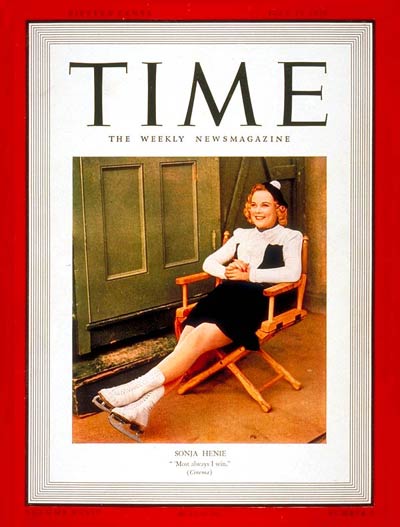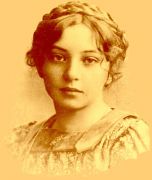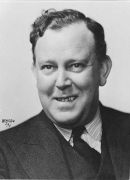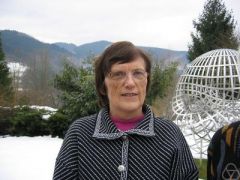In the February, March and April 2015 editions of Viking magazine, we ran a 3-part series on Legendary Norwegians. The men and women chosen lived during the last two centuries and played important roles in shaping Norway into the country it is today. Their accomplishments spanned across politics, arts, sports, science and other disciplines. Thank you to all the readers who sent in suggestions for more Norwegians worthy of being highlighted. Based on those suggestions, here are a few more legends.
By Megan Borgert-Spaniol
 |
Sonja Henie, figure skater/actress
1912–1969
Oslo-born Sonja Henie began figure skating at the age of six. Over the years, she studied ballet in tandem with her training on ice and would incorporate the dance into her skating choreography. This, along with her bold costumes and dimpled smile, marked the young skater as a national idol. From 1927 to 1936, Henie collected 10 world titles, six European titles and three Olympic gold medals. She then brought her talent to the United States, where she produced her own ice shows and became an adored Hollywood star. Before Henie died of leukemia at age 57, she and husband Niels Onstad established the Henie Onstad Art Center in Oslo.
 |
||
Sigrid Undset, author
1882–1949
The daughter of an archaeologist, Nobel Laureate Sigrid Undset was exposed at a young age to the art of uncovering the past. As a student she was reluctant, always skeptical of her school’s progressive ideals; instead she poured her energy into literature, and by her mid-twenties, her first two books had been published. Undset went on to write “Kristin Lavransdatter,” the historical trilogy for which she was rewarded the Nobel Prize in Literature in 1928. During World War II, she was forced to flee to the United States, an experience she wrote about in her autobiography “Return to the Future.”
 |
|
Trygve Lie, politician/lawyer
1896–1968
Growing up in a working-class neighborhood in Oslo, Trygve Lie took an early interest in labor policy. Lie received his law degree in 1919 and eventually became a prominent member of Norway’s Labor Party Government. During World War II, he was appointed Minister of Foreign Affairs. Lie’s greatest political achievement came after the war, when the newly formed United Nations elected him Secretary–General. While in office, Lie proposed a twenty-year program for achieving peace, a mission that he considered his duty. After resigning his post due to Soviet opposition and McCarthy-inspired suspicions, Lie wrote “In the Cause of Peace,” a memoir about his time in the United Nations.
 |
||
Idun Reiten, mathematician
1942–
Idun Reiten has been recognized as one of the leading female mathematicians in the world today. Reiten first demonstrated her knack for numbers as a girl growing up near Trondheim. At 12 years old, she was one of only five participants to solve every problem set in a national math competition. In school, a split focus between math and language indulged Reiten’s love for finding patterns among symbols. In 1971 she received her PhD in mathematics at the University of Illinois. It was there that she met American mathematician Maurice Auslander, with whom she eventually developed the Auslander–Reiten theory. Now 73 years old, Reiten’s many honors include the Mobius Prize, the Fridtjof Nansen Award, and membership in the Royal Swedish Academy of Sciences.
Nils Aas, sculptor
1933–2004
Nils Aas grew up in Inderøy, Norway as the son of a cabinetmaker. Instead of taking over his father’s trade, Aas moved to Oslo to attend the National Academy of the Arts. He debuted as a sculptor in 1964, and in the course of his career became known for his versatility. Aas commanded wood, clay, wire and other materials to create both abstract and naturalistic works. He is perhaps best known for his bronze statue of King Haakon VII on June 7th Square in Oslo and the granite rendering of Henrik Ibsen in front of Den Nationale Scene in Bergen. The Nils Aas Artist Workshop in Inderøy showcases models of these famous sculptures along with various portrait busts and a central monument made of logs.
Jon Rønningen, wrestler
1962–
Oslo native Jon Rønningen is known as one of the greatest wrestlers to come out of Norway. He competed in Greco-Roman wrestling, a sport in which competitors attack with only their arms and upper bodies. Rønningen won the World Championship in 1985 and went on to take the European title in 1990. He also represented Norway in four summer Olympic Games, claiming gold in both Seoul and Barcelona. Rønningen’s athletic performance has earned him recognition as Norwegian Sportsperson of the Year (1988) and a place in the FILA Hall of Fame (2009). His brother, Lars Rønningen, was also a prominent Greco-Roman wrestler.
Who are your favorite legendary Norwegians? Send an email to [email protected].
